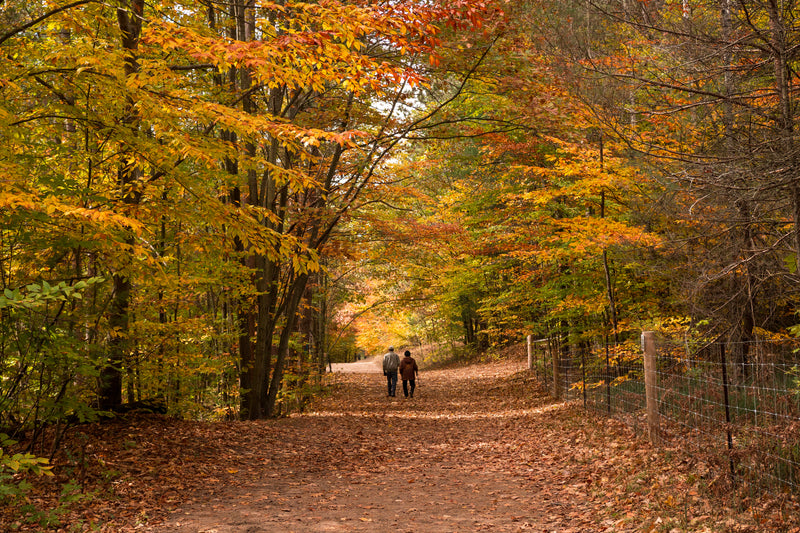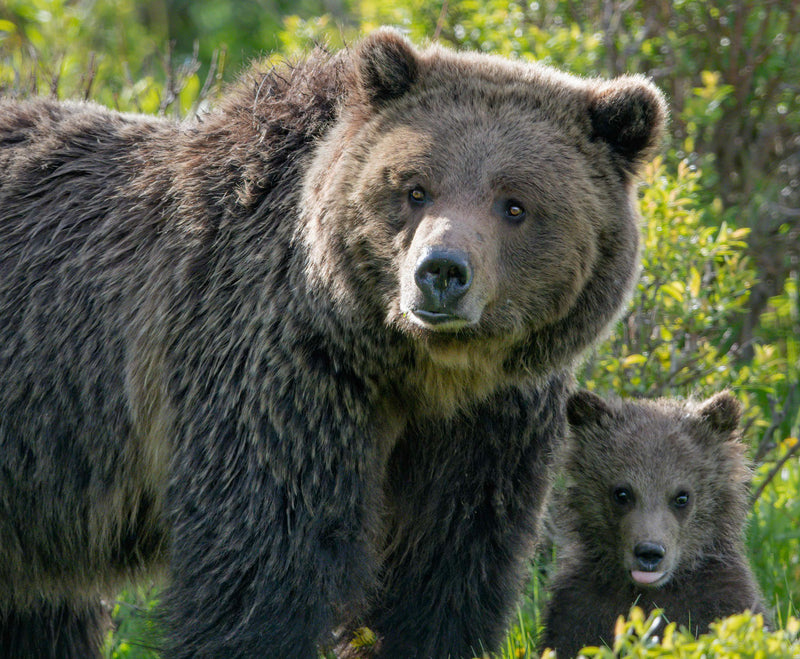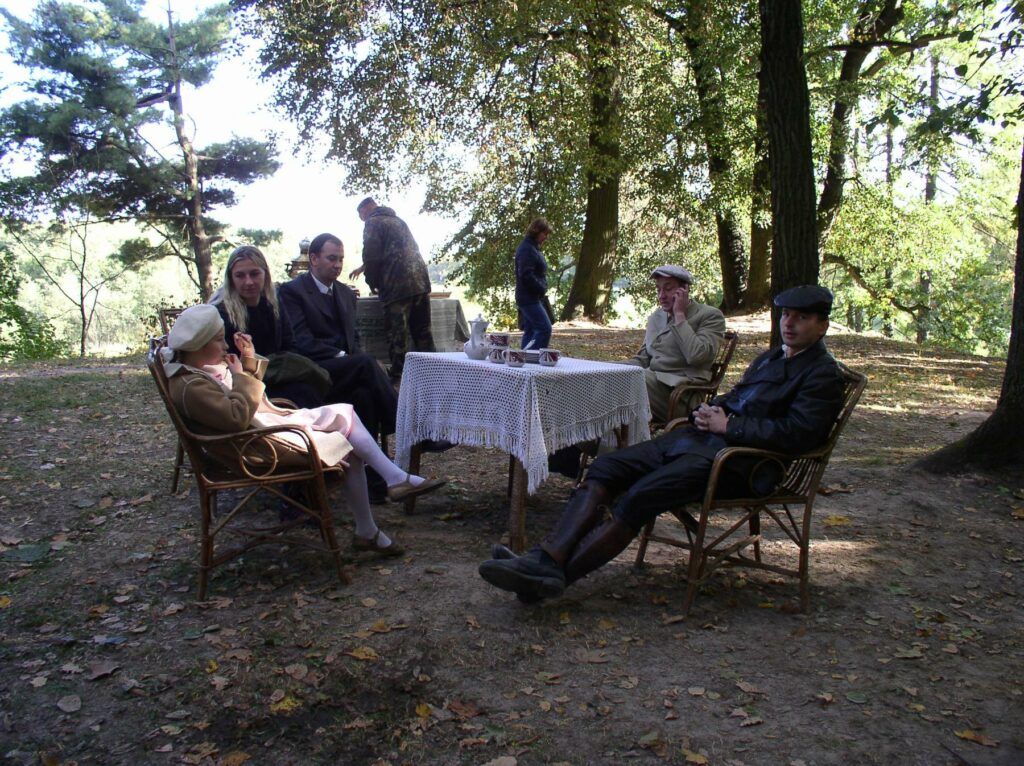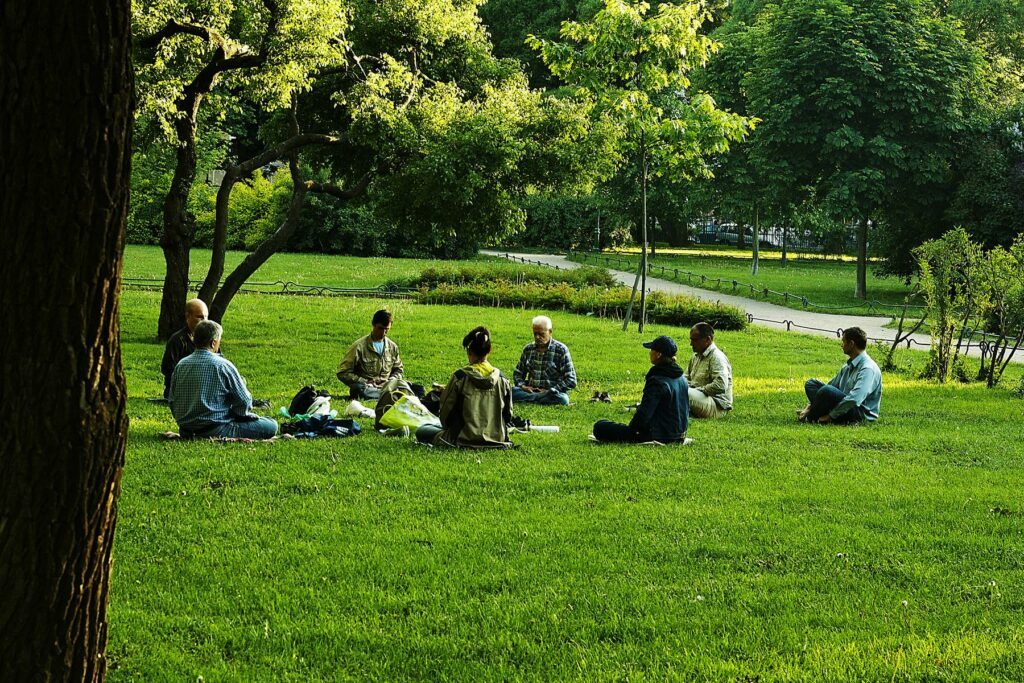Fall is a special season of the year, and camping in fall can be a wonderful experience. The cool, crisp air, the vibrant colors of the leaves, and the feeling of being surrounded by nature make it a perfect time to get outside and enjoy the outdoors. In this complete guide, we’ll cover everything you need to know about camping in fall, including the advantages of doing so, how to plan your trip, the best destinations to visit, essential gear to bring, fun activities to do, food and cooking tips, safety considerations, and more. Whether you’re a seasoned camper or a first-timer, this guide will help you make the most of your fall camping trip.

Advantages of Camping in the Fall
Fall camping offers a unique and rewarding experience that is distinct from any other time of the year. Here are some of the advantages of camping during the fall season:
1. Avoiding the Crowds
One of the main benefits of fall camping is the chance to escape the crowds that are present during the summer months. With fewer people around, you can enjoy a more peaceful and relaxing camping experience. You will not have to worry about finding a good spot to pitch your tent or dealing with noisy neighbors.
2. Beautiful Scenery
Fall is a time of year when the leaves on the trees change color and create a vibrant and stunning landscape. Camping during this season allows you to witness this natural beauty up close and personal. The colors of the leaves create a breathtaking backdrop that will make your camping trip more memorable.
3. Comfortable Sleeping Conditions
The cooler temperatures during the fall season make for more comfortable sleeping conditions. You can snuggle up in your sleeping bag and enjoy a good night’s sleep without worrying about overheating. The crisp fall air is refreshing and invigorating, and you will wake up feeling energized and ready for a new day.
4. Enjoy Outdoor Activities
Fall is a great time of year to enjoy outdoor activities such as hiking, fishing, and wildlife viewing. You can explore the natural wonders of the season without being bothered by pesky insects that are common during the summer months. The cooler temperatures make it easier to engage in physical activities, and you will feel more comfortable and less tired.
Overall, camping in the fall season is an incredible way to experience the outdoors in a unique and rewarding way. You will enjoy the beautiful scenery, comfortable sleeping conditions, and outdoor activities that this season has to offer.

Planning a Fall Camping Trip
When planning a fall camping trip, it’s important to choose a campsite that is suitable for the season. Here are some key factors to consider:
Location
Consider the location of the campsite and its proximity to activities such as hiking trails, fishing spots, or scenic drives. Look for campsites that offer views of fall foliage or are near bodies of water.
Amenities
Check the amenities offered at the campsite, such as water, restrooms, and fire pits. Consider whether you’ll need to bring your own gear such as a tent or sleeping bags, or if you can rent them on-site.
Weather
Check the weather forecast for the area and be prepared for cooler temperatures and possible rain or snow. Pack warm clothing, waterproof gear, and extra blankets or sleeping bags to stay comfortable.
Regulations
Be aware of any regulations or rules that apply to the campsite, such as quiet hours or fire restrictions. Follow all regulations to ensure a safe and enjoyable experience for everyone.
Leave No Trace Principles for Fall Camping
When planning a fall camping trip, it’s important to remember the principles of Leave No Trace. These principles help to minimize the impact of camping on the environment, and ensure that future generations can enjoy the same natural beauty.
1. Plan Ahead and Prepare
Before heading out on your fall camping trip, make sure to research the area and any rules or regulations that apply. This will help you to plan your trip and avoid any potential issues.
2. Travel and Camp on Durable Surfaces
When setting up camp, choose a durable surface such as a designated campsite or previously used area. Avoid setting up camp on fragile vegetation or in areas that are prone to erosion.
3. Dispose of Waste Properly
Pack out all trash and dispose of waste properly to avoid littering and contaminating the environment. Use designated waste disposal sites or carry out human waste using a portable toilet.
4. Leave What You Find
Avoid damaging or removing any natural features such as rocks, plants, or wildlife. Leave everything as you found it to preserve the natural beauty of the area.
5. Minimize Campfire Impact
Use a camp stove or fire pit to minimize the impact of campfires on the environment. Make sure to follow all fire safety guidelines and avoid building fires in areas where they are not allowed.
6. Respect Wildlife
Observe wildlife from a distance and avoid disturbing them. Do not feed or approach wildlife, and store food properly to avoid attracting animals to your campsite.
By following these Leave No Trace principles, you can enjoy your fall camping trip while minimizing your impact on the environment.

Top Fall Camping Destinations
If you’re planning a fall camping trip, there are many great destinations to choose from. Here are some of the top fall camping destinations and what makes them unique:
Acadia National Park, Maine
Acadia National Park is a popular fall camping destination due to its stunning autumn colors and scenic hiking trails. Visitors can also enjoy kayaking, biking, and fishing. The park offers several campsites with amenities such as showers, restrooms, and picnic tables. Be sure to book your campsite in advance, as spots fill up quickly during the fall season.
Great Smoky Mountains National Park, Tennessee/North Carolina
Great Smoky Mountains National Park is a beautiful fall camping destination, with its vibrant foliage and wildlife sightings. Visitors can also enjoy scenic drives, hiking, and fishing. The park offers a variety of campsites, including backcountry sites for a more secluded experience. Be sure to check the park’s website for any closures or restrictions due to weather conditions.
Zion National Park, Utah
Zion National Park is a great fall camping destination due to its cooler temperatures and stunning fall foliage. Visitors can hike, bike, and enjoy the park’s scenic drives. The park offers several campsites with amenities such as showers and restrooms. Be sure to plan ahead and reserve your campsite, as spots fill up quickly during the fall season.
When choosing a fall camping destination, consider factors such as weather, activities available, and camping amenities. Research the park or campground ahead of time to ensure it fits your needs and interests. With so many options to choose from, you’re sure to find the perfect fall camping destination for your next trip.

Camping Gear for Fall
When it comes to camping in fall, packing the right gear is crucial to stay warm and dry during your trip. Here are some expert recommendations to help you pack effectively:
Tent
Choose a tent with a rain fly to protect yourself from rain or snow. Look for a tent with good ventilation to prevent condensation inside. You can also consider a four-season tent that offers extra protection from harsh weather conditions.
Sleeping Bag
Choose a sleeping bag with a temperature rating that matches the expected low temperature of the area. It’s better to choose a sleeping bag with a lower temperature rating, so you can add layers or unzip it if you get too warm. Consider bringing a sleeping pad for extra insulation from the cold ground.
Clothing
Bring warm clothing such as insulated jackets, hats, and gloves. Dress in layers that can be easily removed or added as needed. Choose moisture-wicking materials that can keep you dry and warm, such as wool or synthetic fabrics. Also, don’t forget to pack rain gear, just in case.
Footwear
Choose waterproof boots with good traction to navigate wet or slippery terrain. Consider bringing extra socks to keep your feet dry. You can also bring gaiters to protect your boots from moisture, mud, and debris.
Other Essentials
Other essential gear to bring includes a headlamp or flashlight, extra batteries, a multi-tool, a first aid kit, and a map and compass. Don’t forget to bring a water filtration system or purification tablets, as water sources may be limited in fall.
By following these gear recommendations, you can stay warm and dry during your fall camping trip and fully enjoy all the beauty and activities fall has to offer. Remember to plan ahead and check the weather forecast before your trip to ensure you are well-prepared for any weather conditions.

Activities for Fall Camping Trips
Fall camping trips offer a plethora of exciting outdoor activities to do. Here are some ideas for outdoor fall activities:
Hiking or Backpacking
Take advantage of the cooler weather and explore the beautiful scenery with a hike or backpacking trip. Research the best hiking trails in the area and plan your trip accordingly. Don’t forget to bring proper gear, including sturdy hiking boots and plenty of water.
Fishing
Fall is the perfect time for fishing, with many species being more active during this season. Check local regulations and obtain the necessary permits before embarking on your fishing trip. Don’t forget to bring your fishing gear, including a fishing rod, bait, and fishing line.
Wildlife Viewing
Fall is a great time for wildlife viewing, with many animals being more active during this season. Research the local wildlife in the area and plan your trip accordingly. Don’t forget to bring binoculars or a camera to capture the wildlife.
Biking
Enjoy the crisp fall weather with a bike ride through the beautiful scenery. Research the best biking trails in the area and plan your trip accordingly. Don’t forget to bring proper gear, including a helmet and a bike lock.
Kayaking or Canoeing
Take in the stunning fall scenery from the water with a kayaking or canoeing trip. Research the best waterways in the area and plan your trip accordingly. Don’t forget to bring proper gear, including a life jacket and paddles.
Scenic Drives
Enjoy the beautiful fall foliage with a scenic drive through the countryside. Research the best routes in the area and plan your trip accordingly. Don’t forget to bring a camera to capture the stunning views.
Photography
Fall offers some of the most stunning natural landscapes for photography. Bring your camera and capture the beautiful fall colors and scenery. Research the best spots for photography in the area and plan your trip accordingly.
Here are some tips for exploring the outdoors during the fall season:
- Research the best hiking trails, biking trails, and scenic drives for fall foliage.
- Bring a camera or binoculars to capture the beautiful fall colors and wildlife.
- Check for wildlife viewing opportunities in the area and plan your trip accordingly.
- Plan for activities that are available during the fall season, such as fishing or hunting.
- Dress in layers to stay comfortable in changing temperatures.
- Always bring a map and compass, and know how to use them in case you get lost.
- Respect wildlife and their habitats, and always leave no trace.

Food and Cooking Tips for Fall Camping
Camping in the fall is a unique experience, and it’s important to plan ahead for meals and cooking. Here are some tips to ensure that your fall camping trip is not only adventurous but also delicious:
Use a Camp Stove or Fire Pit
A camp stove or fire pit is a must-have when camping in the fall. Make sure to bring one along and follow all safety guidelines when cooking over an open flame. This will not only keep you warm but also provide you with a hot meal.
Store Food Properly
Protect your food from animals and insects by storing it in airtight containers. This will prevent your food from getting spoiled or stolen. You can also store your food in a cooler with ice to keep it fresh.
Plan Meals Ahead of Time
Planning ahead for meals is crucial when camping in the fall. Be sure to bring enough food for your trip and plan simple and easy-to-cook meals. You can even cook some meals ahead of time and freeze them for a quick and easy meal later.
Ideas for Delicious Fall Camping Meals
Here are some delicious fall camping meal ideas to inspire your next trip:
- Grilled chicken with a side of sweet potato and apple hash
- Warm and hearty campfire chili with a side of cornbread
- Easy-to-make sausage and vegetable skewers
- Indulge in the fall flavors with some pumpkin spice pancakes
Planning ahead for meals and cooking will ensure that you have a successful and satisfying fall camping trip.

Safety Tips for Camping in the Fall
Camping in the fall season can be an amazing experience, but it also requires some additional safety precautions. Here are some important safety considerations for fall camping trips:
Check the weather forecast and be prepared for cooler temperatures and possible rain or snow.
It is essential to check the weather forecast before going on a fall camping trip. Fall weather can be unpredictable, and it is important to be prepared for any weather conditions. Bring clothing appropriate for cooler temperatures, including warm layers, a rain jacket, and waterproof boots. Additionally, if there is a possibility of snow, be sure to bring appropriate gear such as snowshoes.
Be aware of wildlife in the area, and follow all safety guidelines.
As with any camping trip, it is important to be aware of wildlife in the area. During the fall season, bears and other animals may be more active as they prepare for hibernation. Follow all safety guidelines when storing food and garbage, and keep a safe distance from any wildlife you encounter. It is also a good idea to carry bear spray and know how to use it in case of an emergency.
Use a tent with a rain fly to stay dry while sleeping.
Fall weather can bring rain and snow, making it important to stay dry while sleeping. Use a tent with a rain fly, and make sure it is properly secured to prevent any water from getting inside. Additionally, it is a good idea to set up the tent on high ground to avoid any potential flooding.
Follow all fire safety guidelines when using a camp stove or fire pit.
Fall camping trips often involve campfires, which can be a great way to stay warm and enjoy the outdoors. However, it is important to follow all fire safety guidelines when using a camp stove or fire pit. Make sure the fire is properly contained, and never leave it unattended. When extinguishing the fire, be sure to pour water on it until it is completely out.
Conclusion
In conclusion, fall camping is an excellent way to enjoy the outdoors and witness the beauty of nature’s colors. By avoiding the summer crowds, you can experience a more peaceful and relaxed camping experience. When planning your fall camping trip, it’s essential to choose the right campsite, pack the necessary gear, plan for outdoor activities, and follow safety guidelines. Be sure to bring warm clothes, blankets, and a good quality tent to keep you comfortable and protected from the cooler temperatures.
Additionally, take advantage of the opportunity to explore the surrounding area, go on hikes, and enjoy fall-themed activities like apple picking or pumpkin carving. Just remember to leave the campsite as you found it and respect the environment.
Overall, fall camping is an adventure that should not be missed. So what are you waiting for? Start planning your trip today and experience the beauty of nature in the fall season. Check out our other content for more tips on planning your next outdoor adventure.
FAQ
Who should go camping in the fall season?
Anyone who enjoys cooler temperatures and colorful fall foliage.
What are some advantages of camping in the fall?
Fewer crowds, beautiful scenery, comfortable sleeping conditions, and outdoor activities.
How do I stay warm while camping in the fall?
Pack warm clothing, a good quality tent, and sleeping bags with a lower temperature rating.
Who should I go camping with in the fall?
Anyone who shares your love for the outdoors and is up for a fall adventure.
What are some popular fall camping destinations?
Acadia National Park, Great Smoky Mountains National Park, and Zion National Park.
How can I prepare for fall camping in case of bad weather?
Check the weather forecast, pack waterproof gear, and have a backup plan for indoor activities.
As someone who has been camping for over a decade, I have gained significant experience in planning and executing successful camping trips. I have also completed a Wilderness First Aid course, which provides me with the knowledge and skills to handle medical emergencies in remote settings. Furthermore, I have extensively researched the benefits and drawbacks of fall camping, and have consulted with several park rangers and outdoor recreation experts for their insights. According to a study conducted by the National Park Service, fall camping is becoming increasingly popular due to its cooler temperatures and lower visitor traffic. As such, I am confident in my ability to provide readers with accurate and useful information to help them plan their own fall camping adventures.



